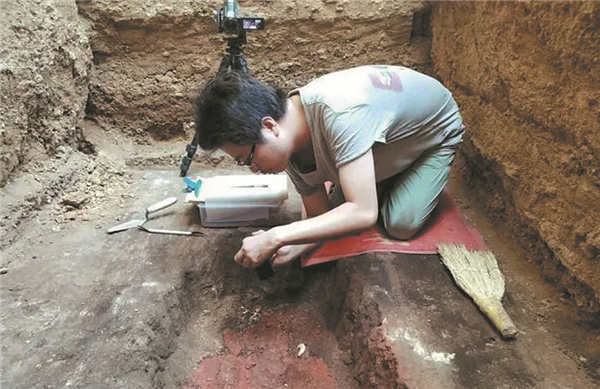

It was named among the country's top 10 archaeological findings in 2018, when the judging committee said that the discovery and excavation of the cemetery was a major breakthrough in archaeological studies of the Shang period. The committee noted that the discovery ascertained the provenance of the bronze artifacts and filled a void in late Shang research in the south of Shanxi. Many of the bronze items unearthed from the tombs at Jiuwutou are carved with a Chinese character that reads like ni. The same character had earlier been found etched on bronze items on display at museums at home and abroad.
However, there were few related historical accounts of ni, and people couldn't decipher its meaning, says Ma Sheng, who was in charge of the archaeological excavation at Jiuwutou.
Until, that is, archaeologists made new discoveries over the long course of the excavations in Shanxi.
"We found the existence of Bing, Xian, Peng, Ba and other vassal states, and by the same token, Ni was also the name of a state," Ma explains. "It was the discovery of Ni wares that lifted the veil of the mysterious Ni clan."
The large quantity of bronze and weapons, such as battle-axes, axes, dagger-axes and arrowheads, shows the military strength of the Ni clan.
Jiuwutou was located on the western edge of the Shang territory and surrounded by mountains to the north, east and south. Today the area is at the junction of the Yuanqu, Yuncheng and Linfen basins and adjacent to rich salt and copper resources.